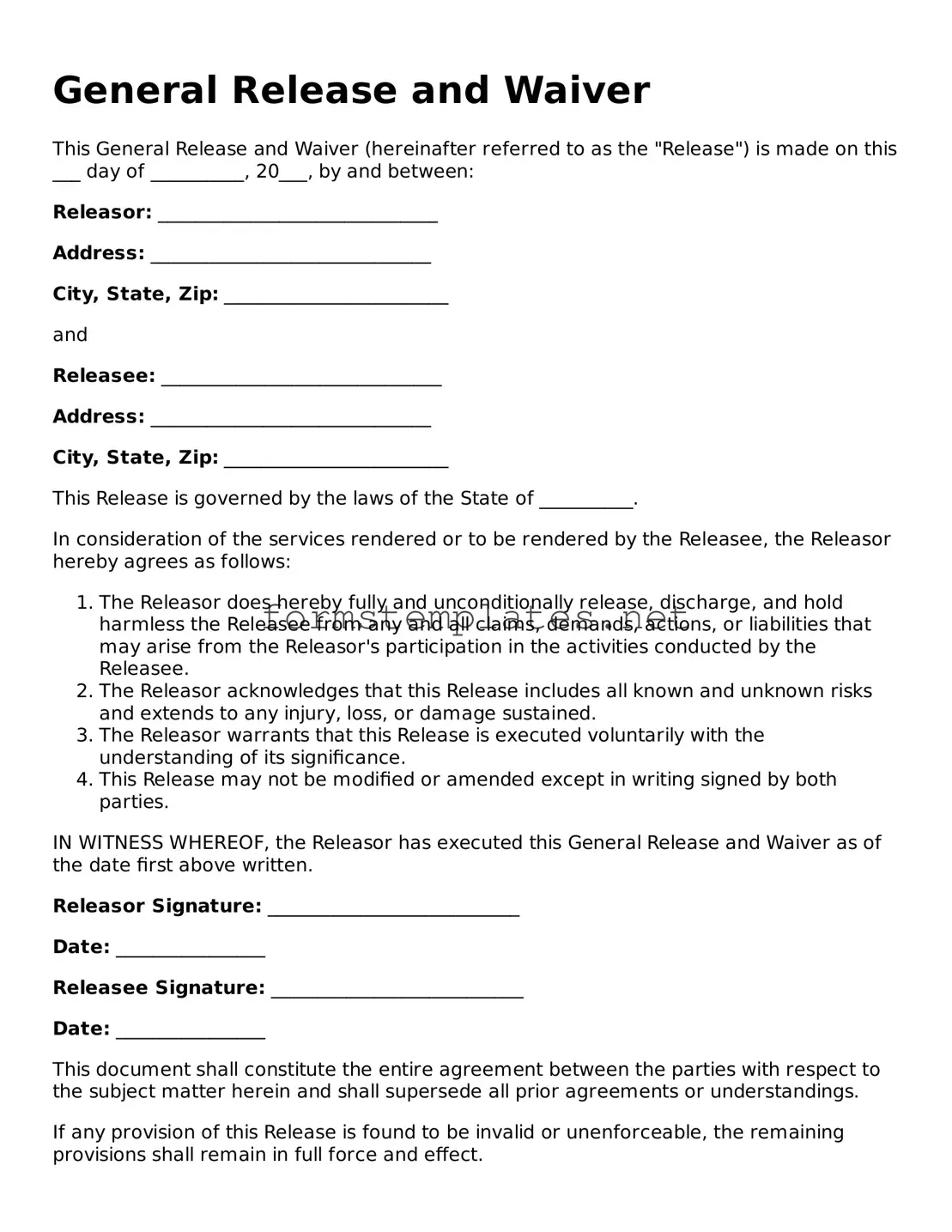Release of Liability
This Release of Liability is made effective as of the _____ day of __________, 20____, by and between:
Releasor: _______________________________________
Address: ___________________________________________
City, State, Zip: _________________________________
and
Releasee: _______________________________________
Address: ___________________________________________
City, State, Zip: _________________________________
This document is governed by the laws of the state of __________.
In consideration of being allowed to participate in the following activities:
- _________________________________________________________________
- _________________________________________________________________
- _________________________________________________________________
I, the Releasor, hereby agree to the following:
- I understand that the activities involve certain risks and may cause injury or damage.
- I assume all risks associated with participation, whether known or unknown.
- I voluntarily release, waive, and discharge the Releasee from any and all liability for personal injury, property damage, or wrongful death that may occur as a result of my participation in these activities.
- This release extends to all claims, demands, actions, and causes of action that I may have against the Releasee.
- I affirm that I am at least _____ years of age and legally competent to enter into this agreement.
By signing below, I acknowledge that I have read and understood this Release of Liability. I voluntarily agree to its terms.
Signature of Releasor: _______________________________________
Date: __________________
Printed Name of Releasor: ______________________________________
